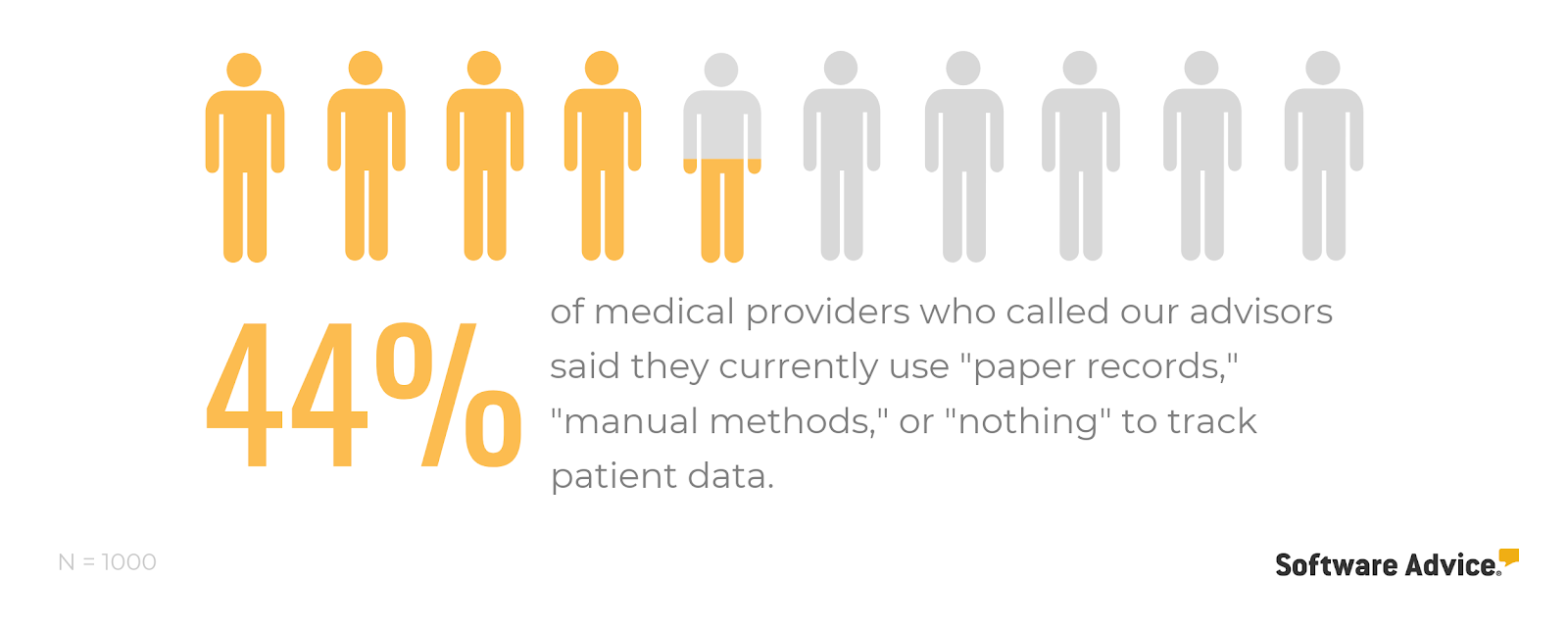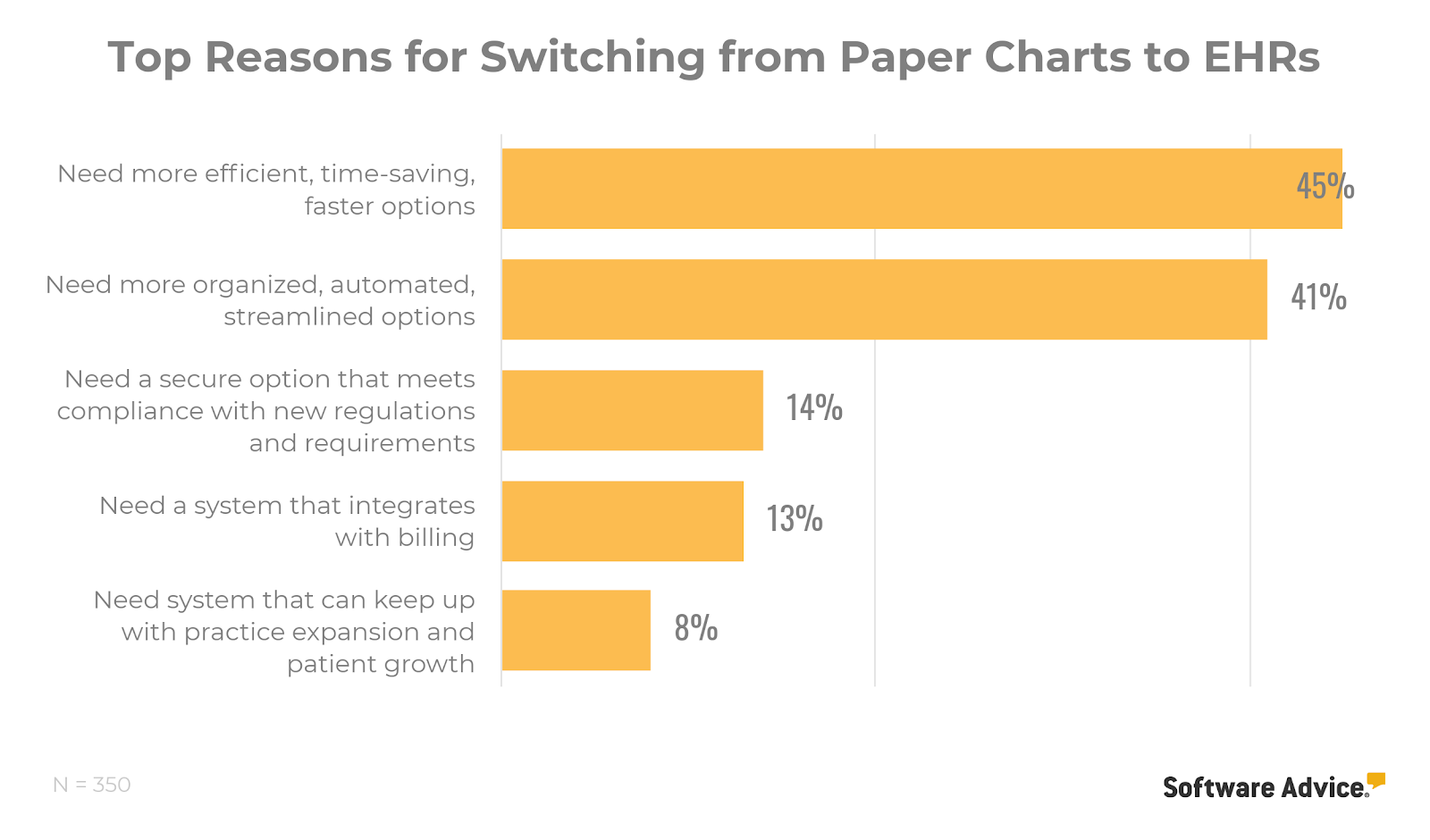The Pros and Cons of Paper Medical Records (According to Doctors Who Use Them)
Since the HITECH Act passed a decade ago and introduced a mandate for medical providers to move from paper charts to electronic medical records systems in order to qualify for Medicare programs, the conversation around whether or not these EHRs help or hurt has not stopped.
Lawmakers continue to incentivize EHR adoption in reimbursement programs, though. Today, under MACRA and the current value-based care model, EHR use is a heavy factor in MIPS scoring. And yet, practices operating on paper records have to weigh those incentives against things like cost and data migration to decide if EHRs are truly worthwhile.
To help make that deliberation a little easier, this article will help you weigh the pros and cons of paper medical records.
What are the advantages of paper medical records?
Despite the federal incentives to switch to EHRs, plenty of doctors are still operating on paper records. In a random sampling of 1,000 medical providers who called our advisors, 44% said they still use paper charts.

Here’s why we think these providers still haven’t made the switch to EHRs.
Familiarity
For a lot of practices that have been operating since before the HITECH ACT and MACRA incentives, paper records are all they’ve ever known.
In these situations, the barriers to switching to an EHR are significant. If archives date back decades, that data is going to take a whole lot of time to migrate over to an electronic system, for example. Additionally, these practices would need to learn about EHRs before they can start evaluating potential products, so there’s added time on the research end.
All that to say, sticking with tried-and-true paper methods is appealing for a lot of providers.
Ease of use
Ease of use goes hand-in-hand with familiarity, and it makes sense. If you’re using a system that’s been in place since day one, you’ve likely worked out all the kinks and you understand how the system works inside and out.
Learning a brand new system—especially an electronic one—is a tall order, and that doesn’t even factor in how tricky customizing a software system can be.
Cost savings
Finally, there’s the money saved by not investing in EHR software. Even free and open source systems can come with hidden fees, so adopting software is always going to mean spending more money than you would on paper records.
The question here becomes, “Are all the benefits of EHRs worth the cost?” Most practices answer with a resounding yes—below we’ll take a look at why many have ditched paper records.
What are the disadvantages of paper medical records?
Our advisors consult with thousands of medical providers each week to help them find the best software fit for their practices. We looked at 350 of those calls from doctors who currently use paper charts and want to transition to an EHR. Below are the top disadvantages cited by doctors:

Inefficiency
Paper charts are notoriously disorganized. When we analyzed our advisor conversations, we found that the words “efficient,” “time-saving,” and “faster” were among the most often spoken.
Here’s an understatement: Doctors spend a lot of time charting. From complex elements like coding to the simple, yet time-consuming, act of writing everything out by hand—charting just takes time.
Beyond that, charts can get lost, and there aren’t usually backups in these situations. It’s easier to make errors or have illegible notes on paper charts, and those can be difficult to catch and correct. Even without those things, the storage space alone is enough to make paper charts impractical.
Each of these reasons have sent tons of doctors searching for a better way, and EHRs have built-in solutions to all of those problems.
Non-compliance
Paper medical charts aren’t compliant with MACRA or Meaningful Use.
If you’re a provider who needs the ability to accept Medicare patients, you simply cannot do that with paper charts. EHRs are required to function in today’s interoperable healthcare market. Beyond that, EHRs are so much more secure than paper charts. They come with built-in failsafes to prevent breaches, and they reduce the potential for HIPAA violations.
No integrations
Paper software, obviously, doesn’t offer integrations with other electronic systems. That means users have to do everything manually when submitting claims.
Most EHR software systems offer full integrations with medical billing features, making claims filing so, so simple. It reduces errors, increases claims acceptance rates, and generally helps with a whole bunch of other billing KPIs.
When should a practice use paper medical records?
Rarely, if ever. The truth is, paper records are out in almost every way. Patients expect their providers to use and offer the most current technology to improve their care, and running a practice on paper records is a HIPAA violation waiting to happen.
There are only two circumstances in which I would ever recommend sticking with paper records. Paper records are for practices that are:
Never going to try to qualify for government reimbursements or value-based programs, or
Incredibly cash-strapped.
Anyone else should 100% use an electronic records system, full stop.
If that means you’re getting ready to select an EHR system for your practice, your best place to start is by reaching out to our team of advisors. They’ve helped all of the doctors in this report find software systems that meet their needs, and they can do the same for you—you can even get started by filling out this form.